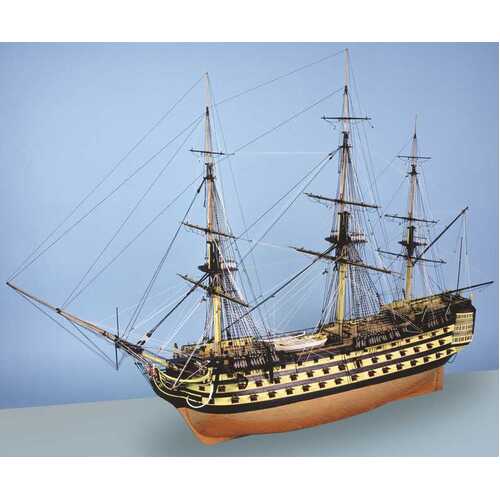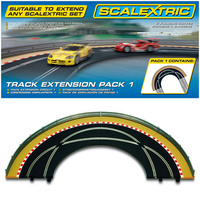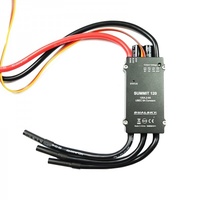Scalextric
Scalextric TRACK EXTENSION PACK 1 C8510
$79.99
Make 4 interest-free payments of $20.00 fortnightly and receive your order now.
Launched on May 18th 2003, exactly 198 years after Nelson first hoisted his flag onboard Victory, the kit includes:
Double plank on bulkhead construction in lime and walnut, complete with pre-cut gunport strips ~ no more need to tediously mark on and cut out the gunports yourself; 5 different sizes of turned brass cannons; Carronades; 8 sheets of brass etched components; 3 different profiled brass rails; CNC cut walnut and ply components, profiled where necessary; All new scale turned wood belaying pins, support pillars and staircase balusters; All necessary blocks and black / natural hemp for rigging; All 4 ships boats in authentic plank on bulkhead construction; All new scale copper plates.
18 sheets of fully detailed actual size plans and a comprehensive, full colour, step-by-step instruction manual including constructional photos of the prototype. All this enables you to build the most authentic model of H.M.S. Victory as she appeared at Trafalgar.
As well as this, the kit also includes the timber work to produce the model to the current specifications as she stands in Portsmouth, for example timberheads, capping and hammock cranes for the forecastle.
Forever associated with Nelson's last battle, H.M.S. Victory is one of the most famous ships of all time, and is now preserved as a major part of the Royal Naval Museum in Portsmouth. The ship's survival is particularly appropriate since Victory is not only an example of the ultimate sailing warship ~ the three decker First Rate ~ but she was also the most popular and successful 100-Gun ship of the period.
Forty years old by the time of Trafalgar (1805), she had been the flagship of half a dozen Admirals, and was to continue in active service until 1812.
This was not the first ship of the Royal Navy to bear the name Victory, there were in fact four predecessors:
1. The first Victory was built in 1559. In 1586, she was rebuilt to 800 tons and carried 34 guns with a crew of 750. At the defeat of the Spanish Armada in 1588, she was the flagship of Sir John Hawkins.
2. Phineas Pett designed the second Victory. She was built at Deptford and launched in 1620. Rebuilt in 1666 to 1029 tons and carried 42 guns and a crew of 500.
3. The Royal James of 1675 was renamed the third Victory in 1691. She was rebuilt in 1695 to 1486 tons and carried 100 guns and a crew of 754.
4. The fourth Victory suffered a tragic fate. Launched in 1737, she was of 1920 tons, carried 100 guns and had a crew of 900. She was lost during a gale while off the Casquets in October 1744. Her whole crew perished with her ~ this tragedy caused the name Victory to be deleted, temporarily, from the Admiralty's list of ship names.
This, the fifth Victory, was one of twelve ships ordered by the Navy Board on June 6th 1759 ~ more than 40 years before the battle of Trafalgar for which she is famed. Designed by Sir Thomas Slade, construction began at Chatham Dockyard on July 23rd 1759, the 'marvelous year' (Annus Mirabilis).
This, the year of victories, marked the turning point of the 'seven years war' for Britain. These facts may well have played a significant part in the naming of the vessel and the name Victory being restored to the Admiralty list of ships.


| SKU | CAL-9014 |
| Barcode # | 5055426700947 |
| Brand | CALDERCRAFT |
Help other Albury RC Models and Hobbies users shop smarter by writing reviews for products you have purchased.
Scalextric
$79.99
Make 4 interest-free payments of $20.00 fortnightly and receive your order now.
DUALSKY
$299.99
Make 4 interest-free payments of $75.00 fortnightly and receive your order now.
DUBRO
$75.99
Make 4 interest-free payments of $19.00 fortnightly and receive your order now.
Welcome to our website. If you continue to browse and use this website, you are agreeing to comply with and be bound by the following terms and conditions of use, which together with our privacy policy govern Albury RC Models and Hobbies’s relationship with you in relation to this website. If you disagree with any part of these terms and conditions, please do not use our website.
The term ‘Albury RC Models and Hobbies’ or ‘us’ or ‘we’ refers to the owner of the website whose registered office is Shop 321A Wagga Road, Lavington NSW 2641. Our ABN is 43602665074. The term ‘you’ refers to the user or viewer of our website.
The use of this website is subject to the following terms of use:
Any enquiries should be addressed to:
Attention: Albury RC Models & Hobbies
Email: via contact form (on this page)
Phone: (61 2) 6025 0497
Postal:
321A Wagga Road
Lavington, NSW 2641
Albury RC Models & Hobbies is committed to protecting your privacy and implementing technology that gives you the most powerful and safe online experience.
This Statement of Privacy applies to the Albury RC Models & Hobbies website and governs data collection and usage. By using the Albury RC Models & Hobbies website, you consent to the data practices described in this statement.
The Albury RC Models & Hobbies is also committed to implementing the National Privacy Principles outlined in the Commonwealth Privacy Amendment (Private Section) Act 2000. These principles regulate the collection, use, handling and storage of personal and system information.
For detailed information about the legislation go to the Federal Privacy Commission website http://www.privacy.gov.au/
In abiding by the National Privacy Principles Albury RC Models & Hobbies will:
In addition, information may be collected and recorded to satisfy Albury RC Models & Hobbies legal obligations not disclose or distribute personal, sensitive or health information collected from its consumers without the consumer’s specific consent or unless required to do so by law. Albury RC Models & Hobbies may distribute aggregated statistical information for reporting purposes, but information that is personally identifying will not be disclosed to third parties disclose, with consent, from time to time, personal, sensitive and health information to others for administrative purposes.
The Albury RC Models & Hobbies website makes some use of data that directly or indirectly identifies users. We take great care with practices that affect personal privacy. Specific details are described below:
At times you may be asked to complete survey questionnaires that appear on the Albury RC Models & Hobbies website. These may include your providing identifiable information. You will be given the reasons for the collection of such information and the purpose for which it will be used. By participating in the questionnaire or survey, you are accepting certain additional terms and conditions relating to the use of the information you provide.
Your name and address details will not be added to a mailing list, nor will officers disclose these details to third parties without your consent unless required by law. Email messages may be monitored by our website support staff for system trouble shooting and maintenance purposes.
Although every effort will be made, the Albury RC Models & Hobbies cannot guarantee to reply to emails. Some email received by the Website Administrator may be forwarded to other officers for appropriate action.
Though this site provides facilities for securely transmitting information across the Internet (SSL and encryption), it is recognised that there can be risks with transmitting information across the Internet. This site may contain links to websites not managed by the Albury RC Models & Hobbies. For those sites, the Albury RC Models & Hobbies is not responsible for the privacy or security practices or the content of such websites.
Information collected within the website files and logs are stored on secured servers to prevent unauthorized access.
The Albury RC Models & Hobbies website use “cookies” to help you personalize your online experience. A cookie is a text file that is placed on your hard disk by a web server. Cookies cannot be used to run programs or deliver viruses to your computer. Cookies are uniquely assigned to you, and can only be read by a web server in the domain that issued the cookie to you.
The purpose of a cookie is to tell the Web server that you have returned to a specific page. This storage lasts in the browser’s memory while the browser is active. The Albury RC Models & Hobbies website checks to see if cookies and java script have been enabled within your browser settings. If not, a message is sent to suggest that you enable these features within your security settings.
Most browsers can be set to accept or reject cookies. You can choose to adjust your browser to reject cookies or to notify you when they are being used. Please note – rejecting cookies may limit the functionality of the Albury RC Models & Hobbies website.
Albury RC Models & Hobbies will occasionally update this Statement of Privacy to reflect the organisation, legislation and customer feedback. Albury RC Models & Hobbies encourages you to periodically review this statement to be informed of how Albury RC Models & Hobbies is protecting your information.
Albury RC Models & Hobbies welcomes your comments regarding this Statement of Privacy. If you believe that Albury RC Models & Hobbies has not adhered to this statement, please contact Albury RC Models & Hobbies – Website Administrator. If you would like further information about the way Albury RC Models & Hobbies manages the personal information it holds, please contact Albury RC Models & Hobbies.


Add your favourites to cart

Select Afterpay at checkout

Log into or create your Afterpay account, with instant approval decision

Your purchase will be split into 4 payments, payable every 2 weeks
All you need to apply is to have a debit or credit card, to be over 18 years of age, and to be a resident of country offering Afterpay
Late fees and additional eligibility criteria apply. The first payment may be due at the time of purchase
For complete terms visit https://www.afterpay.com/terms


 More info
More info

